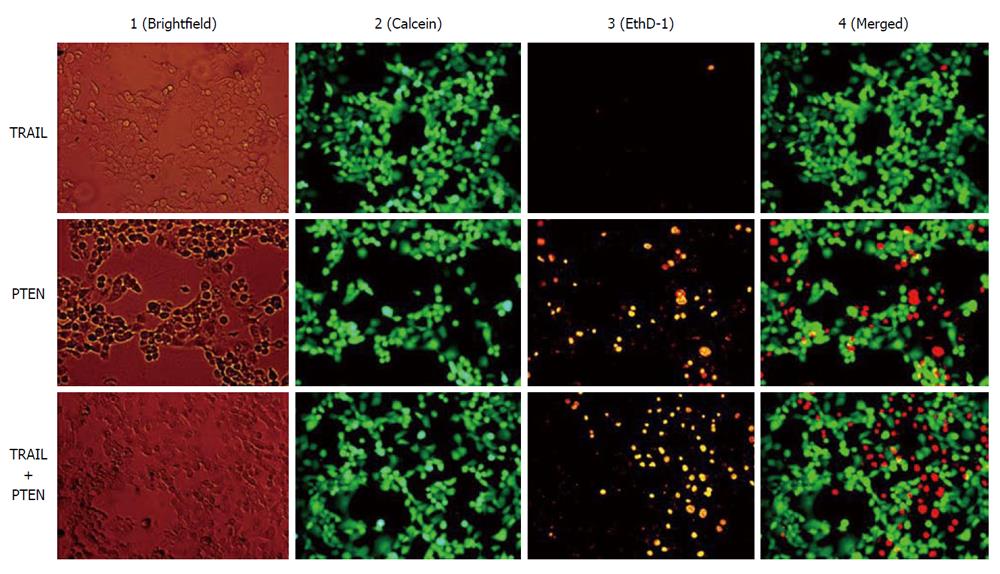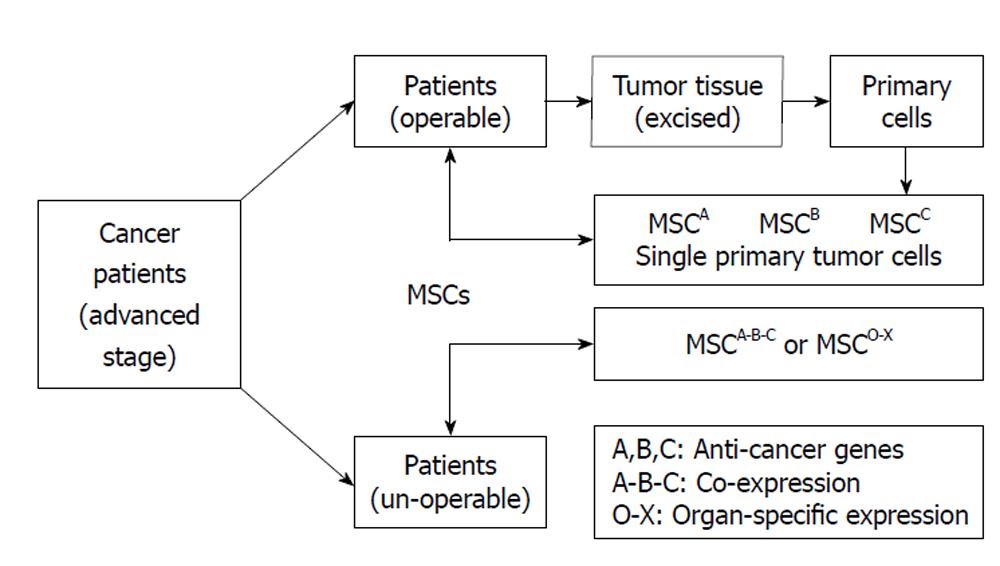Copyright
©2011 Baishideng Publishing Group Co.
World J Stem Cells. Nov 26, 2011; 3(11): 96-103
Published online Nov 26, 2011. doi: 10.4252/wjsc.v3.i11.96
Published online Nov 26, 2011. doi: 10.4252/wjsc.v3.i11.96
Figure 1 Tumor necrosis factor-related apoptosis-inducing ligand- and/or phosphatase and tensin homolog-induced apoptosis in Panc-1 cells.
Panc-1 cells were pre-detected for death receptors and showed negative expression of death receptor 4 and 5. The cells were plated on day 0 and transfected with TRAIL- and/or phosphatase and tensin homolog (PTEN)-bearing vectors on day 1. Apoptosis was assessed on day 3 with a live/dead assay. The top two rows represent the cells transfected with TRAIL or PTEN individually, and the bottom row shows the cells with co-transfection of two vectors. Column 1: Whole population of cells which were still attached to the surface during the assessment; Column 2: Live cells stained with calcein show green; Column 3: Dead cells stained with EthD-1 show red; column 4: Merged images. Original magnification, × 400. TRAIL: Tumor necrosis factor-related apoptosis-inducing ligand; PTEN: Phosphatase and tensin homolog.
Figure 2 Putative personalized strategy for cancer therapy with engineered mesenchymal stem cells.
Operable patients provide direct access to tumor tissue. Primary tumor cells can be isolated from excised tumor tissue and co-cultured with anti-cancer gene pre-engineered MSCs. The most sensitive type of engineered MSCs can be selected through transwell co-culture or other real-time monitoring systems. Useable amounts of MSCs can be obtained through large scale of transduction with selected anti-cancer gene. For patients not receiving surgical intervention (un-operable), multiple gene co-expression or organ-specific expression vectors can be used for MSC transduction. As explained in the text, MSCs can be obtained from patient’s own body or other suitable allo-sources and transplanted accordingly. MSCs: mesenchymal stem cells.
- Citation: Sun XY, Nong J, Qin K, Warnock GL, Dai LJ. Mesenchymal stem cell-mediated cancer therapy: A dual-targeted strategy of personalized medicine. World J Stem Cells 2011; 3(11): 96-103
- URL: https://www.wjgnet.com/1948-0210/full/v3/i11/96.htm
- DOI: https://dx.doi.org/10.4252/wjsc.v3.i11.96










